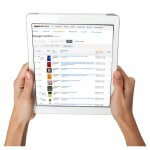
September is fast approaching, bringing new opportunities as well as challenges. Our Amazon seller news report gives you a quick heads up so you can channel your resources more efficiently to make the most of Q4.
1. New Refund Policy
Effective October 2, 2017, buyers will be able to return certain items without contacting the seller. Instead, they’ll print their own prepaid return labels to ship the items back, using the Online Returns Center. There’s also a ‘returnless refund’ option, automatically enabling them to keep the items.
Sellers must issue their refunds no later than 2 business days after they’ve received the returned item. They may also be expected to cover return costs. More information is available here (sign-in required). Sellers who’d like to get a head start can let Amazon know using this survey.
2. Night and Weekend Deliveries
Sellers using a contracted carrier (i.e. not using an Amazon Partnered Carrier), must confirm that the carrier provides evening and weekend delivery. Booking deliveries outside working hours helps Amazon fulfillment centers cope with growing demand. Carriers unable to make evening and weekend deliveries need to book the next available time slot using the automated scheduling system.
3. New Transit Times
As mentioned in our previous post, Amazon USA has shortened its standard shipping transit time for media sellers. They must now deliver their orders to the contiguous United States in 4-8 days after dispatch. Amazon UK will follow suit on September 18, 2017. From then on, UK-based sellers will be expected to deliver in 2-3 days domestically and in 5-7 days across Europe.
4. Feedback Manager
As of July 27, 2017, Amazon Seller Support services will no longer be helping with feedback requests. To review, challenge, and remove negative feedback, please use the Feedback Manager.
5. Long-Term Storage Fee Update
We mentioned last month that Long-Term Storage Fees were being updated following the semi-annual inventory clean-up. We thought it’s worth reminding our readers that Amazon now charges $11.25 per cubic foot for items stored in fulfillment centres for 6 to 12 months, and $22.50 per cubic foot for those older than a year. More on this topic here.
6. New Field for Energy Efficiency
EU labelling requirements call for Amazon sellers to display energy efficiency information on the detail page. To that effect, Amazon has updated the flat file with a new efficiency range field, “Energy Efficiency Class Range”.
Here’s a list of the attributes and the information they must include:
- Energy efficiency (A, B, C);
- “Energy Efficiency Class Range”(eu_energy_label_efficiency_class): efficiency range (‘A-G’ or ‘A+++-D’);
- “Energy_efficiency_image_url”: the URL address for the JPEG images starting with “http://” and ending with “.EEGL”, (e.g. http://www.yourserver.com/images/product.EEGL.jpg). The image file should be at least 500 pixels in length on the highest side.
- “Product_efficiency_image_url”: the URL where the product fiche image is stored. The requirements are the same as above, but the link must contain “PFUK”.
For additional support, Amazon recommends a list of Compliance Solution providers available here.
7. Upcoming Amazon Webinar
An hour-long Amazon webinar for sellers interested in using Sponsored Products will be taking place on August 24, 2017, 10:00 AM BST. Titled ‘Getting Started with Amazon Sponsored Products’, the webinar will provide information on setting up your first campaign, along with a few insider tips. Sign up here.
8. Amazon UK Waives Minimum Fee
Starting September 1st, 2017, Amazon will change the way it charges referral fees. They will apply to the total sales price, shipping and gift wrapping charges included. In other words, Amazon will waive the £0.40 minimum fee per item.
For example, Amazon would have charged £0.40 for an item belonging to a 12% referral fee category and priced at £2.00. It will now charge only £0.24 (12% of the selling price), because the minimum referral fee of £0.40 no longer applies.
9. Book Listing Updates
Amazon recently announced an update to product classifications in the Books inventory file. Three optional fields have been added: THEMA, BISAC and BIC. These are classification systems used in the book industry, with THEMA the most popular. They help classify your products on Amazon to enable customers to find them more quickly.
The list of binding options has also been updated, but the Price & Quantity template remains the same.
10. Search Results Improved
Finally, Amazon recently rolled out a feature to limit the length of the generic keywords attribute. The byte limit is now 250 on most marketplaces. India and Japan are the only exceptions, with a 200 and 500 byte limit, respectively. It applies to all ASINs, and to the entire content of the generic keyword fields.
Entries exceeding this limit will be excluded entirely from the catalog, so please check every listing. Alphanumeric characters (letters and Arabic numerals) are equal to a single character, while currency symbols and other characters make up 2 or 3 bytes. Spaces and punctuation don’t contribute, and they’re mandatory.
Melanie takes an active interest in all things Amazon. She keeps an eye on the latest developments and keeps Amazon sellers up to speed.